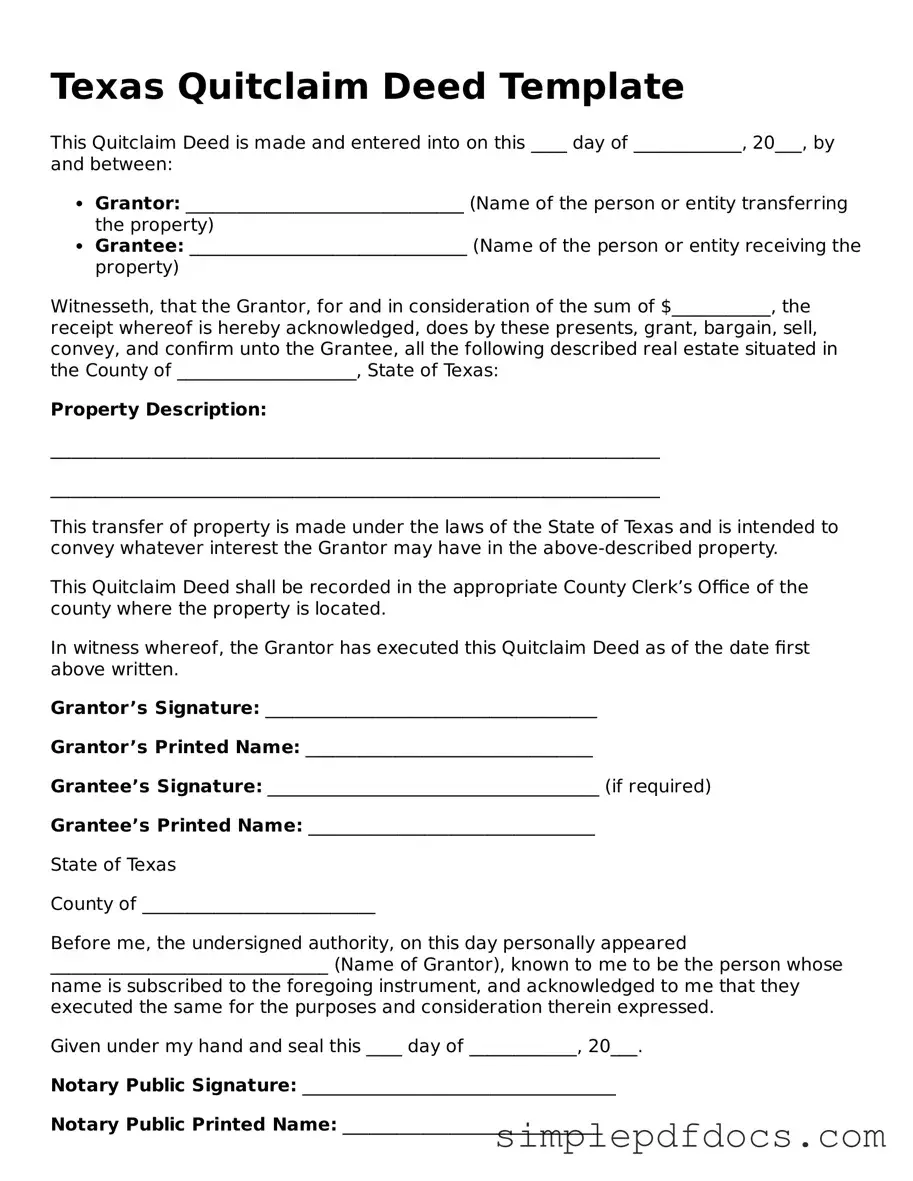Legal Quitclaim Deed Document for the State of Texas
A Texas Quitclaim Deed is a legal document used to transfer ownership of real estate from one party to another without guaranteeing the title's validity. This form is often employed when the grantor wishes to relinquish any claim to the property, making it a straightforward option for property transfers among family members or acquaintances. Understanding the Quitclaim Deed's implications is essential for anyone involved in real estate transactions in Texas.
Get Document Here
